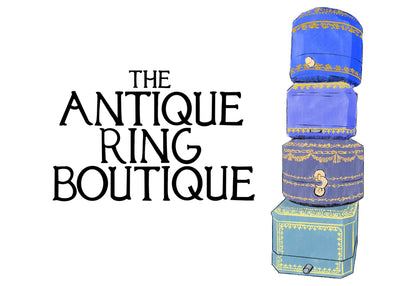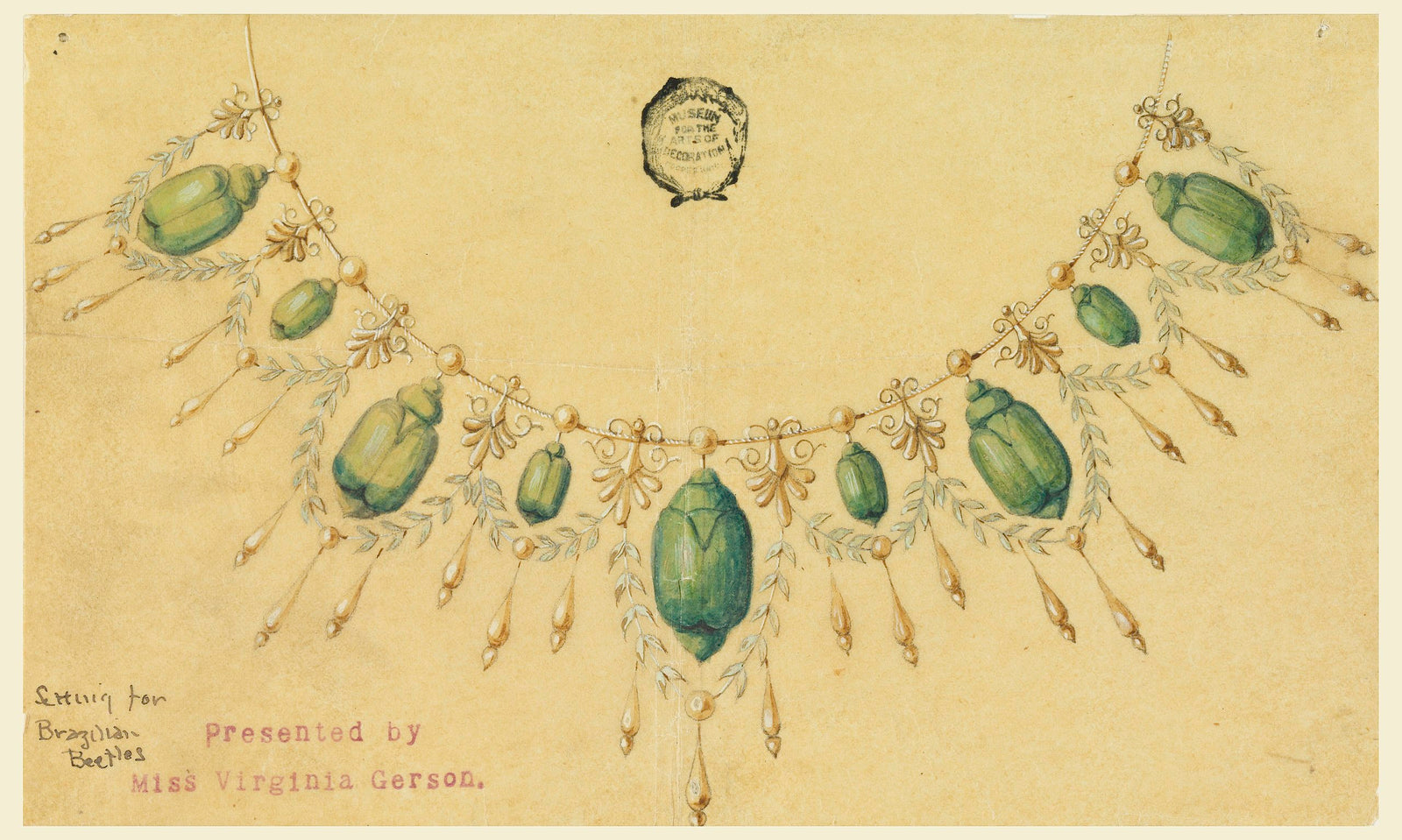The Victorian era produced an intriguing trend that continues to captivate modern enthusiasts — insect jewellery. This style, encompassing brooches, necklaces, rings and everything in between, showcases a unique approach to fashion. It’s whimsical yet sophisticated. It’s colourful, flashy and sometimes a bit weird. Above all, it’s unmistakably different from modern designs.

The Victorians, known for their innovative and forward-thinking attitudes towards style, found inspiration in the natural world. This ultimately led them to craft exquisite pieces featuring insects. The resulting jewellery was a statement of elegance and a deep appreciation for the beauty found in nature.
Perhaps that’s why Victorian insect jewellery remains so popular. Today, collectors and fashion lovers seek these vintage treasures, drawn to their blend of historical significance and timeless appeal. Let’s explore why.
What is antique Victorian insect jewellery?
A popular trend in the Victorian era was to incorporate the shapes and colours of insects into jewellery design. What made Victorian antique insect jewellery stand out was its intricate detail and the use of precious metals and gemstones to bring creatures to life. Each piece told a story and demonstrated the craftsmanship of its maker.
The colourful and elaborate trend followed the simplicity and elegance of the preceding Georgian era. The Victorian era can be summarised through three distinct periods, each with its unique characteristics:
- The Romantic period highlighted expressions of love following the engagement of Queen Victoria and Prince Albert
- The Grand period reflected Queen Victoria's mourning of Albert, with black gemstones mimicking the solemn mood of the monarch
- The Aesthetic period marked a departure from valuing gems solely on their worth to appreciating them for their visual appeal, with lighter, more practical rings.
Insect jewellery came to prevalence during the Grand period, from the 1860s onwards. It could be used as a sombre piece but also became more colourful and elaborate as time went on. Its popularity remained in the Edwardian, Art Deco and Art Nouveau periods. But what inspired it?

Why did the Victorians use insects in jewellery?
The incorporation of insects into Victorian jewellery was driven by many factors. Primarily, the era's fascination with the natural world extended to jewellery. Insects served as a counterpoint to England’s Industrial Revolution, reconnecting wearers with nature’s beauty.
The era was also a time of empire and more widespread travel. For instance, the revival of Egyptian motifs brought ancient symbols, including scarabs, into fashion. These exotic designs satisfied the Victorian appetite for exploration, the mysterious and natural history.
The Victorians' preoccupation with mortality and the afterlife also played a role. Insects, with their potential to fascinate and repulse, offered a unique way to explore these themes. They often served to shock or provoke thought in a society fascinated by the macabre.
Another layer was romantic symbolism, mainly influenced by Queen Victoria and Prince Albert’s love story. Jewellery became a canvas for expressing personal sentiments.
Did the Victorians use live insects in jewellery?
Occasionally, it was a trend among the more audacious members of high society to adorn their attire with gem-encrusted live beetles. According to most anecdotes, this caused both amusement and dismay. Although these instances were rare and received a mixed response, they underscore the era's boldness in pushing the boundaries of fashion.
The types of antique insect jewellery
Victorian insect jewellery came in various forms. Each had its own unique charm. Brooches, necklaces or lockets, pendants, rings and even engagement rings could all feature insects in their design, captivating the imagination with their intricate settings.
Sam Mee, Founder of the Antique Ring Boutique, explains, “Some pieces prized entomological accuracy, while others took creative liberties. For example, you might find a butterfly brooch with wings glowing with beautifully coloured gemstones. Likewise, you can see dark mourning pieces.

"But no matter the design, the individuality of each piece was paramount. Pieces were often inspired by the beauty of their chosen stone. This reflects the bespoke nature and charm of jewellery from the Victorian era.”
A popular technique was making jewellery en tremblant — where the insect motif was set on springs. This ingenious detail meant that with every movement of the wearer, the jewelled insect would also move, mimicking real life. This effect added a layer of realism and dynamism to the piece, enhancing its impact and showcasing the Victorians' love for innovation and detail.
It’s another quirk that keeps Victorian jewellery alive today.
Insects used in Victorian-era jewellery
Among the most cherished insect jewellery designs were those featuring dragonflies, scarab beetles, butterflies, spiders and bees. Each insect was selected for its unique symbolism and aesthetic appeal.
Dragonflies, with their delicate wings, were often crafted to symbolise change. Their beauty was captured in pieces like dragonfly brooches made of fine metalwork and sparkling gemstones
Scarab beetles, a symbol of rebirth and regeneration in ancient Egypt, were embedded into jewellery with vibrant enamels and precious stones
Butterflies, symbols of transformation and fleeting beauty, were used heavily in all types of jewellery. Their colourful wings were often rendered in a broad spectrum of different coloured gemstones
Spiders, though a less common choice, intrigued wearers with their complex web designs. They symbolised fate and interconnectivity and were also used for more sombre pieces
Bees, emblematic of industriousness, were celebrated in gold and amber. They were also sometimes used in darker pieces.
Typically, beetle and butterfly pieces are more common to find nowadays. From bar brooches to rings, the variety of insect jewellery keeps collectors and enthusiasts hunting for the perfect piece.
What gemstones were used in Victorian insect jewellery?
Victorian insect jewellery is renowned for its gemstones, creating pieces bursting with colour and life. This trend embraced a mix of gems in a single item, making each piece a dazzling display of craftsmanship.
Among the favourites were:
- Amethysts, with their deep purples symbolising royalty
- Diamonds were ever popular across the various eras
- Rubies, sapphires and emeralds, each added a splash of rich colour. Bugs with rounded cabochon-cut ruby eyes were particular favourites.
- Garnets were also popular, their warm tones complementing other stones.
- Beyond these, amber, pearls and coral provided a delicate balance of natural beauty and elegance. More vibrant gems would often be paired with superbly cut diamonds to balance colour and prestige.
Mee explains, “This eclectic mix of gems didn’t only showcase the era's technological advances in gemstone cutting. It also reflected the Victorians' love for intricate designs and meaningful symbolism. By blending stones and other materials across a piece, each became a testament to the era's unique approach to jewellery design.”
Why is Victorian jewellery popular today?
Victorian jewellery, with its rich history and exquisite craftsmanship, continues to enchant collectors and fashion aficionados alike. The attraction lies in the era's unique blend of beauty, symbolism and innovation.
Victorian insect jewellery, in particular, remains fashionable for its detailed representation of nature. Each piece is a sought-after collectible in its own right. Ranging from dragonflies to bees, insect jewellery is a window into the Victorians' fascination with the natural world.
Mee adds, "Victorian insect jewellery captures the imagination with its detailed craftsmanship and the stories each piece tells. There's a charm in how these pieces reflect reverence for nature and skill in jewellery making. Personally, I find the blend of art and nature in each piece truly captivating."
Discover our collection of Victorian rings and add a piece of history to your collection.

